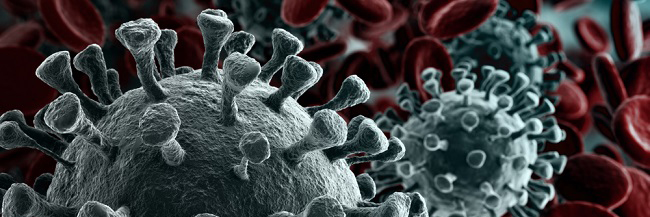COVID-19 pandemic most likely caused by trading animals susceptible to bat coronaviruses
Published: 17 August 2021
CVR researchers with colleagues from the South China Agricultural University and Xi'an Jiaotong-Liverpool University discuss the body of scientific evidence and the heavily debated question: where did COVID-19 come from?

The available evidence suggests that animal-to-human transmission associated with infected live animals is the most likely cause of the COVID-19 pandemic.
Since its emergence, sampling has revealed that coronaviruses genetically close to SARS-CoV-2 are circulating in horseshoe bats, which are dispersed widely across China and Southeast Asia. Although it is possible that a virus spillover occurred through direct horseshoe bat–to–human contact, the first detected SARS-CoV-2 cases in December 2019 have been associated with Wuhan wet markets. No evidence exists for SARS-CoV-2 being created in a research laboratory.
It is currently not possible to be certain of the animal source of SARS-CoV-2, however live animals, including civet cats, foxes, minks, and raccoon dogs, which are all susceptible to bat coronaviruses were for sale in Wuhan markets, including the Huanan market throughout 2019.
The evidence suggests a central role for live intermediate host animals as the primary source of the SARS-CoV-2 progenitor that humans were exposed to, as was the case with the origin of SARS (severe acute respiratory syndrome) outbreak in 2002.
In order to discover the exact animal source of the COVID-19 pandemic, we need to keep sampling and interviewing people connected to the sources of wildlife which were sold in the Wuhan markets in October and November 2019.
There is an urgent need for us to increase surveillance for coronaviruses at the human–animal interface to minimize the threat of both established and evolving variants evading vaccines, and to stop future spillover events
First published: 17 August 2021
<< News
Read the article published in Science Perspectives
Watch our animation to explore how we use viral genomics to find out the evolutionary origins of SARS-CoV-2

